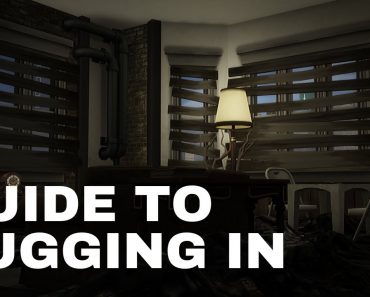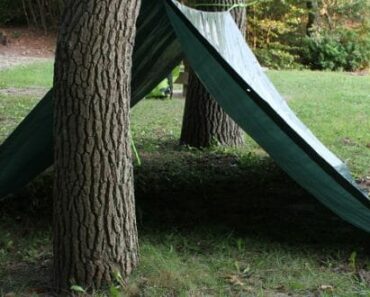Every night you spend outside may be your last during the winter months if you are ill-prepared. The bone-chilling cold could freeze you to death if you don’t have proper shelter and adequate clothing for the season.
This may seem a little bit dramatic for the reader, but we can all agree that winter is not the time to wander outside if you are unprepared or if you venture into an area where you can be caught off-guard.
Mother nature has specific rules we all need to respect, and if you like spending a lot of time outside, no matter the time of the year, you need to read her signs.
Dropping temperatures and rising wind chills are usually the signs telling you to stop whatever you’re doing and seek shelter as fast as possible. Otherwise, you’ll become one of the countless victims of winter’s wrath.
The more time you spend outside, the more your body temperature can drop to dangerous levels, and once it reaches a certain point, your body becomes sluggish, and your mind becomes numb. You can become irrational and logical thoughts will be replaced by disorientation, lethargy and you may drift into a sleep from which you will not wake up.
When it comes to emergency or survival shelters, people often think about situations that go really bad, like post-apocalyptic scenarios. But survival is just a word that means staying alive, and you don’t always have to associate it with living in the woods or amongst rubles, type of scenarios.
Even homeless people have to seek shelter during the cold months. They live in one of the world’s wealthiest countries, where there’s no national crisis scenario that affects their well-being.
How our society and government treat them and the fact that they don’t have a proper roof over their head, they get hungry and ostracized is a more complex topic. However, regardless of how they lost their homes, just like a stranded person in the wilderness, they too need to address their immediate need for shelter if they want to survive.
Anyone could find themselves in a situation where they need to find or construct an emergency shelter regardless of their location, social position, etc. If you find yourself in trouble, you need to build or find a shelter that can help you maintain your body’s core temperature.
Shelter basics
When you are searching for a winter shelter or if you plan to construct one, may it be a permanent building, a tent, or temporary construction, you need to keep in mind the following basic requirements:
- The shelter requires a stable platform and construction. You will need to build something sturdy or use only constructions that are not damaged if you seek shelter inside. The shelter you build should withstand the pressure exerted by snow loads and severe weather. The elements will put tremendous stress on your emergency shelter, and it may end up affecting its structural integrity. You need a strong foundation that can hold the frame you build in place, and you should reinforce the structure using rope, cordage, wire, and other available means. Even if you pick a structure like an abandoned home, you should make sure it’s suitable for living because even unseen structural damage can make the building collapse once the snow settles on the roof or high winds exert pressure on exterior walls.
- Regardless of whatever shelter you’re using, it should provide you with protection from natural elements and other threats. It needs to keep the rain, wind, and snow from affecting your health, but it also needs protection from predators (humans and animals). Select an isolated location and use construction materials you find in your environment, camouflage techniques, and other protection means.
- The location of your shelter should be free of natural or manufactured dangers. You need to build your shelter in an area free of natural hazards. For example, you should never set your tent in a location that has overhanging widow-makers or where floods, mudslides, avalanches, or falling rocks could endanger your shelter. If you fear the actions of humans, your shelter should provide enough protection from gunfire, and it should be concealed as best as possible to avoid detection.
- The shelter should retain heat, and it must be well insulated. This is another vital aspect when you’re seeking shelter from the cold. Regardless of what shelter you build, you need to ensure the exterior is adequately insulated with whatever materials you have available. For example, after you’ve built the framework, you need to use nonporous materials like a trash bag, a tarp, and even large leaves layered on the framework. On this layer, you can add debris, snow, and other materials to build the outer shell, which will provide good heat retention. These rules should be followed regardless of whether you need to construct a shelter in the wilderness or an urban environment. Also, keep in mind that a smaller shelter is easier to warm, and it will retain heat much better than a large one.
- The shelter needs to provide good insulation, especially if you want to start a fire inside. This is a feature that is often overlooked by most folks when building a shelter, and it can lead to unpleasant situations or worse. Some have died from carbon monoxide poisoning because they didn’t think of a way to have fresh air circulating into their shelter. If you burn fuel for whatever reason inside your shelter at all times, make sure there’s a vent hole integrated into your shelter at the top and a fresh air entry vent that can be located near the entry. These holes should provide a constant flow of fresh air that helps dissipate carbon monoxide. Remember that carbon monoxide is odorless and invisible and kills rather quickly if there’s a high concentration inside your shelter.
Types of shelter
It’s recommended to keep it simple, and you should build something that requires the least amount of time and effort. Think of what is best for your situation and what you can construct using the materials at hand.
In my opinion, the most accessible emergency shelters to build in the wilderness are debris shelters, lean-tos, and snow caves. In an urban environment, you can build pretty much anything with manufactured materials, especially if you find a location that can be occupied (like abandoned structures).
Debris shelter
This is one of the quickest and easiest shelters you can build, but it has the disadvantage of providing the least protection from the elements. It is a shelter that can keep you alive long enough until you can build something better or until help arrives.
The shelter can be built from any readily available material you have laying around in your environment, such as branches, loose bush, rocks, leaves, etc. You do not require any tools to build this shelter, but the key to success is knowing how to use the land’s topography to your advantage.
A few years back, I took part in a survival course in Denmark, and the instructor showed us his preferred method of building a debris shelter in the wilderness. He would look for the root ball of a fallen tree and use it as the base for its shelter. To be more precise, the root ball can form a wall for your shelter, and the depression left where the root ball was pulled out of the ground can be used as the floor.
You will need to make sure it’s dry and place debris such as green branches or leaves to form the floor to keep you off the ground and help you to remain warm. Use rocks, logs, and fallen branches to create walls around you, and for the roof, you can use a tarp or a plastic bag covered with branches. You might want to cover yourself with more debris at night, depending on how cold it gets.
This is just an example, but you can build many more types of debris shelters depending on your region and its topography.
Lean-to
Once you make it through the cold night, it’s time you think long-term if help doesn’t arrive. You will need to build a more durable shelter to stay safe and warm. Something like the lean-to might be just the thing you need.
Since you already have a debris shelter, you can quickly build upon it. You will have to use some long, straight logs and this means looking for some that are readily available and are not rotten, or you might have to cut some yourself. Look for saplings with a 2- to 4- inch diameter and cut them down. These will form the primary support for your lean-to shelter.
You can lean the logs against the base of the root ball (from our example) or a cliff wall, leaning tree, etc., at an angle to form a sloping wall. Now cover the timbers with evergreen branches starting from the bottom and working your way out, just like you would lay shingles on the house. This roof should keep rain and snow off you. You can use other materials such as smaller logs and branches to make walls.
Snow cave
During the winter months, snow is worthy material for building a shelter since it’s an excellent insulator. Snow shelters have saved the lives of many stranded skiers, snowmobile riders, or hikers, thanks to their ability to dig a snow cave and crawl into it.
Due to snow’s excellent insulating properties, the snow cave can be kept warm using a small heat source, and in some cases, your body heat might even be enough to maintain this improvised shelter warm. You can build a snow cave pretty much anywhere as long as there’s a lot of snowfall and the snow density is good.
Keep in mind that cooler air sinks to the ground, so you will need to make the entrance tunnel of the snow cave rise a bit. If you do so, cold air flows away from you. Dig a sleeping area in the side of the snow cave wall, and make sure it’s elevated, higher than the floor.
In well-compacted snow, all you need is about one foot of snow to have a strong roof overhead. However, you will need at least two feet in less consolidated snow. Once you finish digging the snow cave, make sure to poke an air vent through the ceiling to have a good air intake. An air vent is a must if you plan on using fire to keep the snow cave warm. Also, remember that you will have to clear the vent hole now and then if it starts snowing.
The urban environment
If you find yourself in an urban setting and you need to make a shelter, you can adapt your wilderness skills and use your imagination to build pretty much anything. There will be all sorts of materials (tarps, cordage, scrap lumber, pallets, cinder blocks, etc.) around you that can be used to build something sturdy.
For example, if you find a few wooden pallets, you can improvise a small cabin with a floor and some walls. Add some plastic bags, a tarp, or any plastic sheet you can find, and you will improvise something that keeps you dry and warm until things improve.
Concluding
The ability to improvise a shelter is a survival skill that everyone should master, and you don’t need to be a woodsman, bushcrafter, or prepper to master such a skill. You never know when you might need to take shelter in an unfamiliar environment, and it’s best if you put your imagination and skills to the test with every occasion you have.
Remember that whatever type of shelter you build should protect you from the elements and keep you warm until help arrives or your situation improves.




























